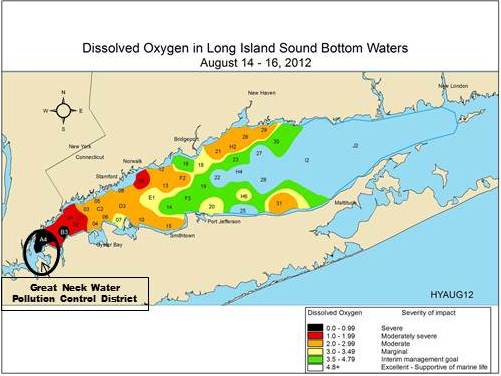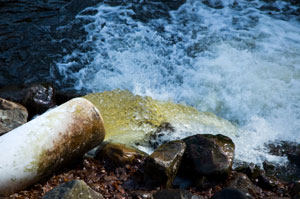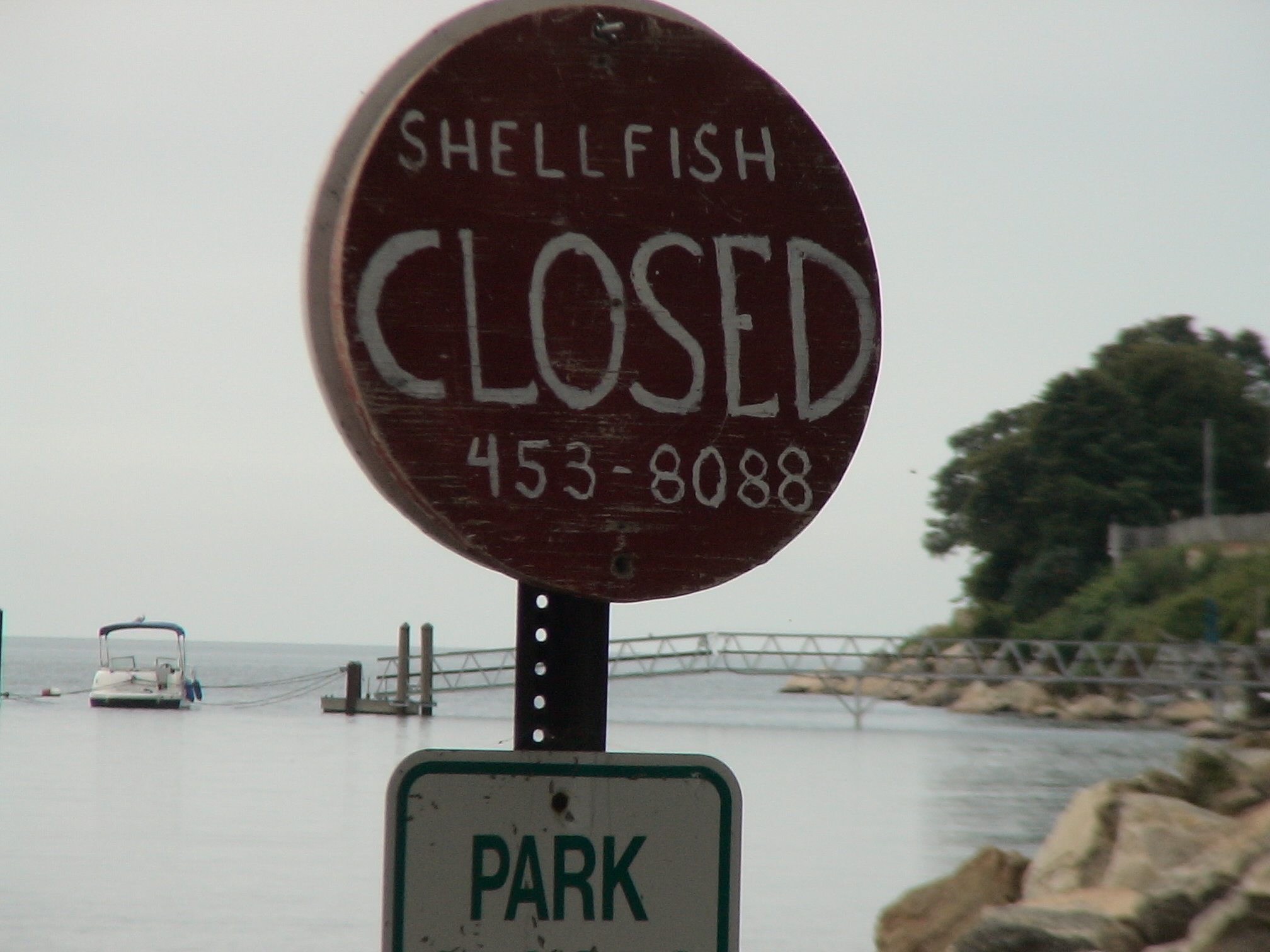Yesterday, Save the Sound filed an appeal of the New York State Department of Environmental Conservation consent order that relaxes the limits on nitrogen dumped into Long Island Sound by the Great Neck Water Pollution Control District.
What exactly does that mean?
For years, the Great Neck Water Pollution Control District has discharged large amounts of nitrogen into the Sound—currently more than twice what it is permitted to do. In May, rather than forcing the district to comply with its limits, NYSDEC entered into a consent order that allows the district to discharge even larger amounts of nitrogen instead of working to address the problem by reducing discharges.
What are we arguing?
In our Article 78 appeal, we argue that NYSDEC’s order violates the federal Clean Water Act because it not only allows nitrogen permit limits less stringent than the federal and state allocations, and goes one step further in attempting to ease Great Neck’s existing permit limits, a violation of the anti-backsliding provisions of the Act. We also contend that DEC failed to adhere to the appropriate public participation standards required when attempting to change permit limits.
So why is this important?
Excessive nitrogen discharged into the Sound is a major cause of hypoxia—the low oxygen dead zone we see in the western Sound every summer. Dissolved oxygen concentrations decline when large amounts of nitrogen and other pollutants enter the Sound. Hypoxia occurs when the dissolved oxygen content in the water falls below three milligrams per liter. At that level, fish and other marine life must flee for healthier waters, or they might die.
The most severe conditions are typically near Larchmont, Mamaroneck, New Rochelle, Great Neck, Sands Point, and Glen Cove. As we wrote previously, this summer, hypoxic conditions were severe in mid-August, some of the worst since Long Island Sound water quality monitoring began in 1991. In fact, during that time frame there was almost no dissolved oxygen in that 18-square-mile location. The large quantities of nitrogen and other pollutants discharged from wastewater treatment plants are one of the culprits that cause severe hypoxia.

While the Great Neck Water Pollution Control District is contributing to the severe hypoxia in the westernmost part of the Sound, this isn’t a localized problem. Anything that enters the Sound, whether in Westchester, Long Island, or Connecticut, impacts the health of the entire Sound. So while the discharging occurs in the westernmost part of the Sound, and impacts that area greatly, it also degrades the health of the entire Sound.
What is being done to fix this?
In 2001, the federal government, New York and Connecticut state governments approved a Total Maximum Daily Load for nitrogen entering Long Island Sound (TMDL). It identifies 11 management zones and mandates a 58.5 percent nitrogen reduction in each zone by 2014. In New York, the zones encompass sewage treatment plants in Westchester County, the Bronx, Manhattan, Queens, Brooklyn, and Long Island.
Under the TMDL, the Great Neck Water Pollution Control District’s current nitrogen allocation is 238 pounds per day. However, over the past year the district has discharged, on average, 526 pounds per day – more than double what is allowed in the TMDL. The consent order that NYSDEC entered into with the district increases the interim limit for total nitrogen for the district to 653 pounds per day. That is more than their permit limit, more than three times what is allowable under the TMDL, and even more than what Great Neck is currently discharging. This cannot be allowed to continue, which is why Save the Sound is appealing.
Connecticut has taken great strides in reducing its nitrogen discharges into the Sound. Due to the state’s commitment to the Clean Water Fund, wastewater treatment plant upgrades and other sewer projects have been completed across the state, reducing excess nitrogen and putting residents back to work. While there is still some work to do, if we continue to build the program, Connecticut is scheduled to meet the 2014 TMDL nitrogen reduction deadline.
While nitrogen reduction work at Westchester County sewage treatment plants is underway in New Rochelle, Mamaroneck, and Port Chester, we will be paying close attention to make sure they stay on target.
There is still a lot of work to be done in New York due to minimal funding and lax enforcement. Entering into a consent order relaxing the nitrogen limits puts the state at a disadvantage and prevents it from truly addressing hypoxia.
By appealing the Consent Order, we hope Great Neck Water Pollution Control District’s current federal and state nitrogen allocations will be enforced and they will meet the legally enforceable 2014 deadline.
Posted by Leah Schmalz, director legislative and legal affairs for Save the Sound




2 thoughts on “Save the Sound Appeals NY Order Allowing Excess Nitrogen into Long Island Sound”
Comments are closed.